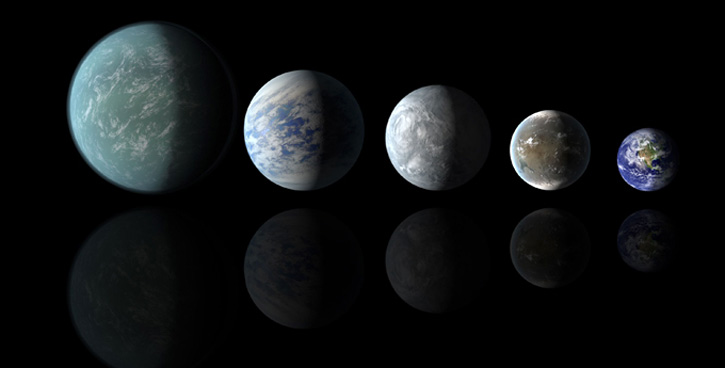News >> Sci-Tech
Most Earth-like planets spotted
 19 Apr, 2013
19 Apr, 2013
Scientists using NASA’s Kepler space telescope have found the best candidates yet for habitable worlds, including a pair of potentially life-friendly planets orbiting the same star, officials have said.
Two of the five planets orbiting a sun-like star called Kepler-62 are squarely in what astronomers call the habitable zone, researchers said in the journal Science as was reported on Thursday by Al-Jazeera.
The habitable zone refers to planets that are are neither too hot nor too cold, and could possibly contain water.
"These two are our best candidates that might be habitable," said William Borucki, Kepler science principal investigator at NASA`s Ames Research Centre.
The two planets are slightly larger than ours, and at least a couple of billion years older.
The first, 62e, is about 40 percent larger than Earth. It might be warm and may experience flashes of lightning, said Borucki.
Constellation Lyra
The second, 62f, is about 60 percent larger than our planet, and orbits its star every 267 days, close to Earth`s annual trajectory of 365 days.
The planet may have polar caps, significant land masses and liquid water, Borucki said.
Both are orbiting a seven-billion-year-old star some 1,200 light years from Earth in the constellation Lyra.
They are close enough to their star to be warm, but not so near as to boil the oceans. They are far enough to maintain the likelihood of water without freezing the seas solid, Borucki explained.
Computer models indicate the two planets, likely are solid bodies comprised of rock, ice or a mix of rock and ice.
The pair have three sister planets that also circle Kepler-62, but those are too close their parent star and likely too hot for surface water.
Candidate planets
Kepler, launched in 2009, is NASA`s first mission in search of Earth-like planets orbiting suns similar to ours.
The telescope measures slight dips in the amount of light coming from target stars that may be caused by planets passing by, or transiting, relative to the telescope`s line of sight.
It is equipped with the largest camera ever sent into space in its search for planets as small as Earth, including those orbiting stars in a warm, habitable zone where liquid water could exist on the surface of the planet.
In late 2011, NASA confirmed its first-ever planet in a habitable zone outside our solar system, Kepler 22b, spinning around its star some 600 light years away.
The large size of that exoplanet, at 2.4 times the size of the Earth, however, has left some doubt over whether the planet is rocky, gaseous or liquid.
Another large planet that Kepler has confirmed in the habitable zone, Kepler 47c, is also much bigger than Earth.
So far, the Kepler science team has more than 2,700 candidate planets.
Source: Primekhobor

